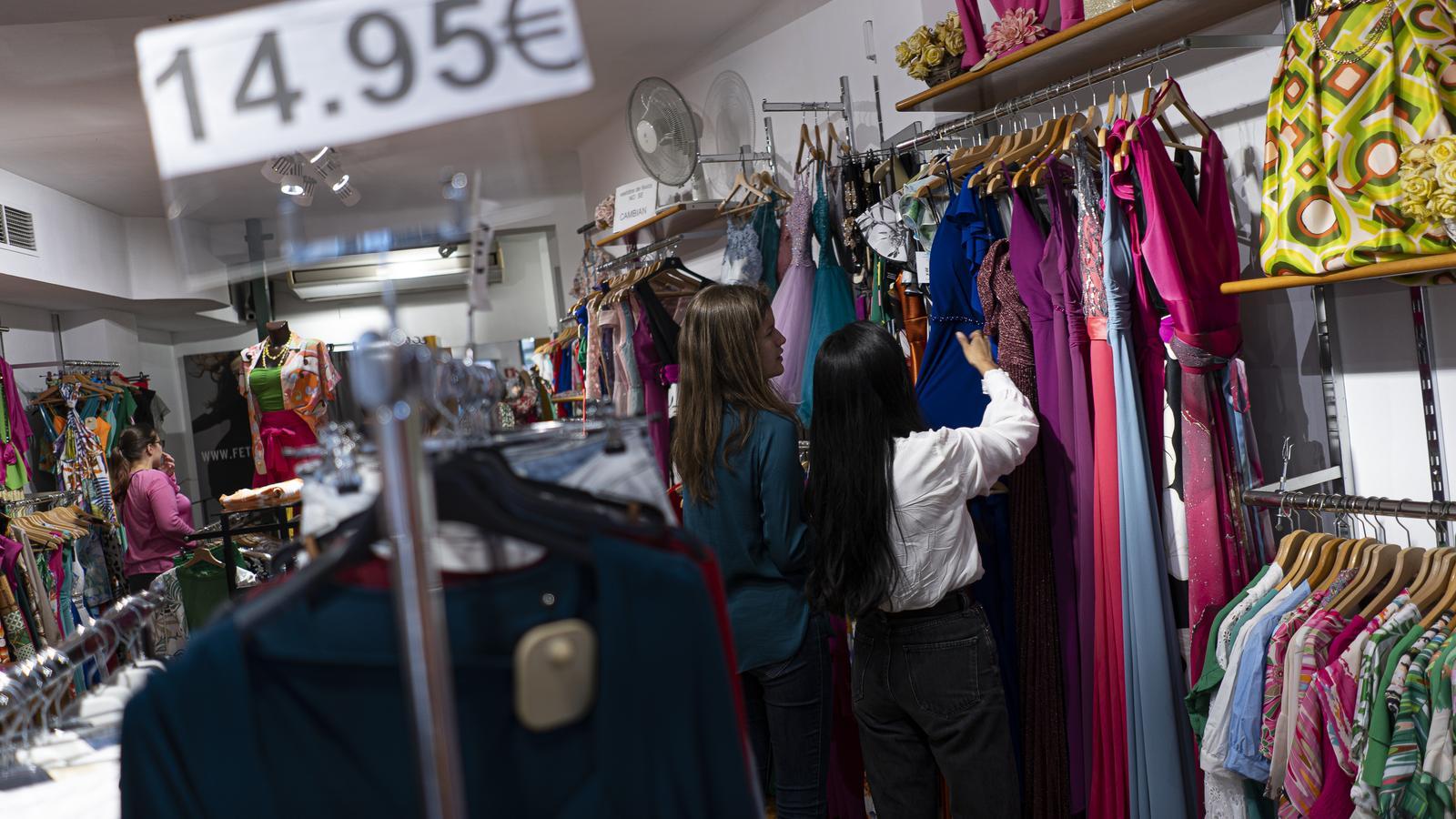"There's no need to start a war you know you're going to lose": What does the Catalan textile industry think about the Shein phenomenon?
Companies in the sector are resisting by focusing on niches such as sustainability and advanced materials.


BarcelonaGemma Molner and her sister are the third generation of a small line of shopkeepers. Their grandparents opened their doors, and today the family business – Xarol fashion stores – has two stores in Tarragona and Reus. However, she has long observed how her customers' consumption habits are changing at a dizzying pace. "Online sales are here to stay. Since Covid, they haven't stopped growing," says the Reus-born businesswoman, who is also a member of the trade committee of the Pimec employers' association in Tarragona and represents the El Tomb trade association in the capital of Baix Camp.
Small fashion retailers are watching a new shock with perplexity: after having resisted the push of large chains and their colonization of the main commercial areas, they now face digital competition from online platforms.ultra fast fashion, like Shein or Temu, with an almost infinite supply of clothing at ridiculous prices. "We can't fight this; there's no need to start a war you know you're going to lose," she says.
For her, the only real weapon of local commerce is education: highlighting the personalized attention of street-level stores and the quality of the fabrics used to make the clothes in their windows. "People don't think about it, but there are more and more intolerances. Not only because of what we eat, but also because of what we put on our skin," warns Molner, referring to the skin reactions that can be caused by certain poorly treated polyesters and acrylics, common in low-cost fashion. The retailer is fully aware that for young people, price is a key factor. "Money can't go far enough. If they offer you very cheap things, it's normal to take advantage of it. These companies play with this. But it's better to have fewer, high-quality clothes than closets full of nothing," she reflects.
This is also supported by David García, general director of the Catalan Fashion Cluster (Modacc), the Spanish Knitwear Association, and the textile technology center Fitex, based in Igualada. "The best sustainability in fashion is conscious consumption: a garment that lasts longer and we have an emotional connection to it," he says. García advocates for a "more identity-based" fashion and an industry capable of having more positive than negative effects on people and the environment. The formula for achieving this, he says, lies in European regulation, which aims to launch a profound transformation in the sector over the coming decades.
Last summer, the new ecodesign regulation came into force, which aims to make products more sustainable throughout their entire life cycle—from manufacturing to recycling—including in the case of textiles. Companies will have to meet certain requirements related to the durability of the parts and their ease of repair, and a digital passport for products with data on the materials will be rolled out. Furthermore, the destruction of all unsold clothing will be prohibited, a common practice among some major brands that they will now have to justify.
At the beginning of the year, an agreement was also reached to revise the European waste management directive and require the separate collection of textiles, as is already the case with glass and paper. Fashion brands will have to assume all costs for the waste they generate, a system known as extended producer responsibility. In Spain, this regulation has already begun to be rolled out, and by 2025 all city councils should have specific containers for used clothing.
"The EU is more protective. We have to produce differently," García emphasizes. The problem, he admits, is that they now have to compete with platforms that "respect neither the environmental objectives nor the intellectual property of other brands." Therefore, the general manager of Modacc considers it inconsistent to require strict requirements from European firms while allowing others, such as Chinese ones, to ignore them.
In practice, any company from outside the EU that wants to sell in the European market must have an entity registered within the EU territory that assumes its legal obligations. However, the sector is concerned about how compliance will be monitored in the diffuse universe of online sales, especially in cases where products arrive via shipments in small packages, which makes customs monitoring difficult.
From textile power to squeezing innovation
García points out that Catalonia is still one of the few EU territories that preserves all elements of the textile production chain, but also recognizes other evidence: "In the 19th and early 20th centuries, we were a power." The splendor associated with this industry gradually faded, and although the Principality maintains powerful, world-renowned fashion brands, most of its manufacturing has been relocated over time to countries in the global south. In our country, everything has been reduced to design, but García warns of the sustained lack of technical profiles such as pattern makers, garment makers, and weavers.
Those that have endured within the industrial model do so because they have found a niche. For example, companies that reoriented themselves to provide services to sectors such as the automotive, aeronautical, sports, and healthcare industries, where other types of fabrics are also consumed. "Our partners don't manufacture for fashion chains, but rather for advanced textile materials," explains Ariadna Detrell, director of Textils.CAT, the Catalan cluster formed around this specialization. In her case, functionality—such as fire protection or allowing a certain level of filtration—and innovation are paramount in production. "These companies haven't had as much competition, and that's what allows them to continue. Textiles are used in many places we wouldn't think of, including a cement factory, protecting people's lives," Detrell emphasizes.
In any case, the advanced textiles sector has survived by exporting abroad and more thanks to European aid than to Catalan aid, the cluster director laments. "It's poorly recognized in terms of visibility and support from the administration. There are lines of financing, but there's a lot of bureaucracy here," she says. Like García, she's also concerned about the difficulty of finding professionals for factories. Although there are specific vocational training courses for textiles, she assures that companies often end up having to train their workers themselves. "It's specific knowledge that requires a very long training period, and with turnover, it's easy for young employees to leave shortly after," Detrell explains.
In her opinion, it's necessary to change the perception of the industry and begin to understand that, in addition to names like Mango or Desigual, Catalonia also has innovative companies dedicated to producing increasingly technological fabrics. Given the emergence of the Shein phenomenon, the director of Modacc, David García, would welcome the introduction of new environmental taxes, in line with the surcharges that France has approved for these platformsGemma Molner, from the trade association El Tomb, also advocates for greener taxation, which would penalize the most polluting companies and incentivize the most sustainable ones: "We need to tax those that don't care for nature and reward those that do."
